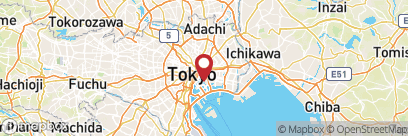The third sumo tournament of the year

https://en.japantravel.com/tokyo/may-grand-sumo-tournament-tokyo/58931
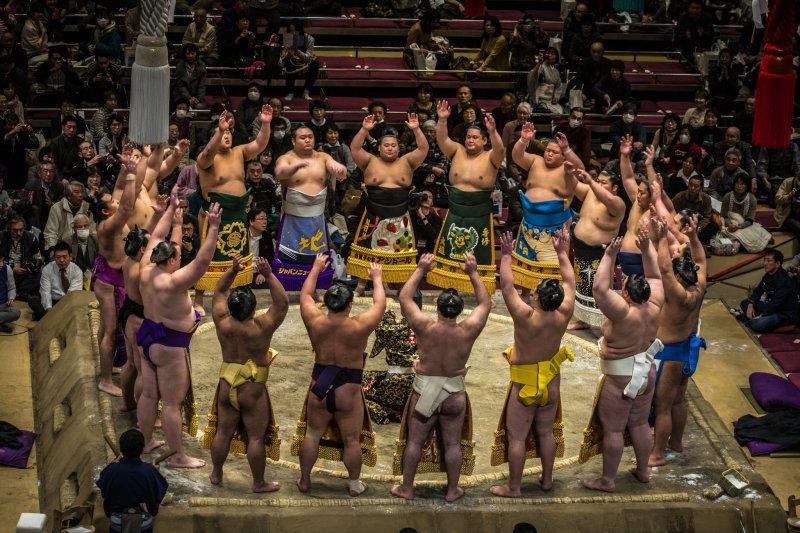
https://en.japantravel.com/tokyo/may-grand-sumo-tournament-tokyo/58931
Venue
When: May 11th – May 25th 2025
The middle of May sees professional sumo return to its spiritual home of Tokyo for the third professional tournament of the season.
The 15-day May tournament will be held at the Ryogoku Kokugikan Sumo Hall in Tokyo in mid-to-late May.
目次
- 2025 May Grand Sumo Tournament information
- Sumo wrestling is Japan’s national sport with a rich history and cultural significance.
- Early Morning
- Morning Training
- Midday
- Afternoon
- Evening
- How do sumo wrestlers prepare for their meals, especially the traditional chankonabe
- Timing and Preparation
- Ingredients and Cooking
- Serving and Consumption
- Cultural Aspects
2025 May Grand Sumo Tournament information
| Venue | Tickets available from | Sumo ranking announced |
| Kokugikan, Tokyo | Apr 5, 2025 | Apr 28, 2025 |
Check the official website for more details about the tickets and schedule.
Information
May Grand Sumo Tournament(大相撲五月場所)
May 11th – May 25th 2025Add to calendar
1-3-28 Yokoami, Sumida City, Tokyo 130-0015 (Map) (Directions)
03-3623-5111
Getting there
Ryogoku Kokugikan is about a one-minute walk from Ryogoku Station on the Chuo-Sobu Line.
More info
Find out more about Ryogoku Kokugikan.
Sumo wrestling is Japan’s national sport with a rich history and cultural significance.
It dates back more than 1,500 years and has religious origins, starting as a way to entertain Shinto deities The ring-entering ceremonies are Shinto purification rituals, and the ring, or dohyo , is a symbolic representation of a Shinto shrineThe throwing of salt before a match is a purification practice meant to cleanse the ring, and the leg-stomping is believed to drive out evil spirits.Matches are brief, often lasting only a few seconds, though they can extend up to four minutes.
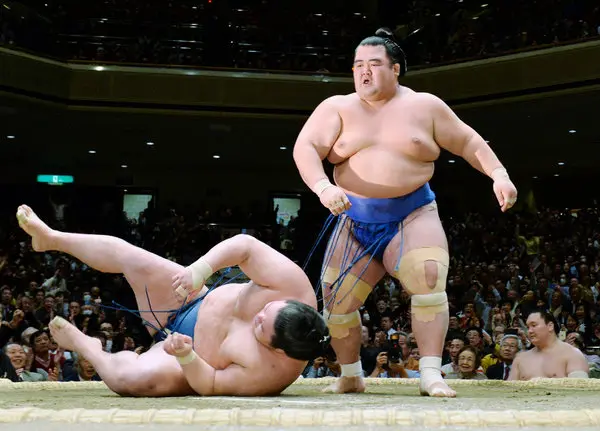
Victory is achieved by throwing an opponent out of the ring or making them touch the ground with any part of their body other than the soles of their feet,wrestler can be disqualified for losing their mawashi ,or loincloth Sumo wrestlers are known as rikishi and live a life of rigorous discipline and tradition in sumo stables, where they live, eat, train, and sleep until they marry and can live independently.Weight gain is essential to their training.
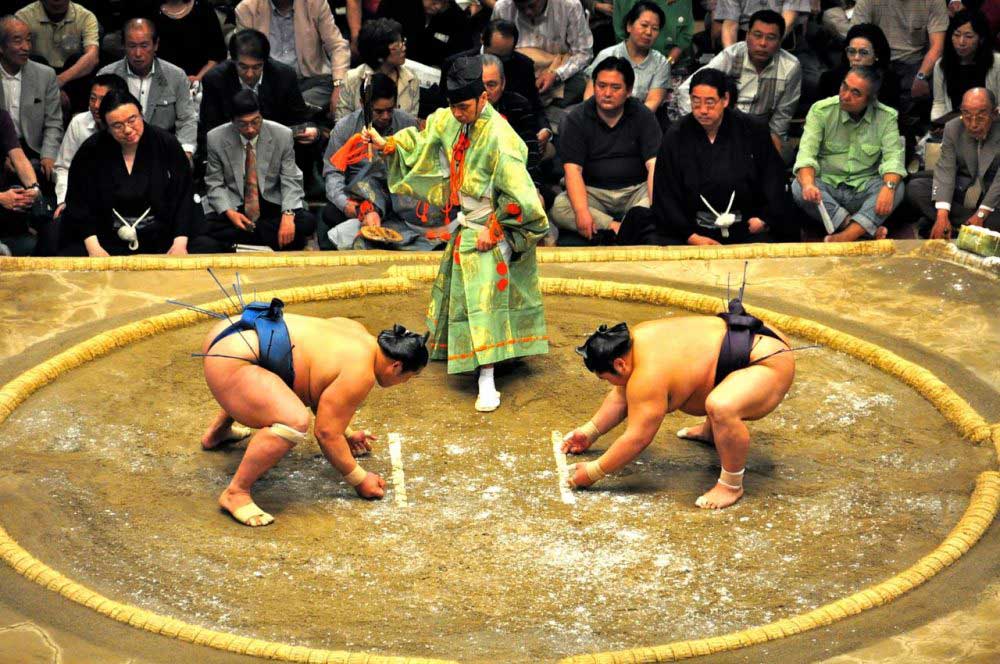
https://en.japantravel.com/tokyo/may-grand-sumo-tournament-tokyo/58931
Sumo wrestlers have the highest muscle mass of studied humans under all that fat.Foreigners are among the best wrestlers, with many top contenders recruited from abroad, especially Mongolia japan has limited the number of foreign wrestlers to one per stable; they must speak Japanese and understand the culture.The crowd can freely cheer or boo during a match and show extreme disappointment by throwing seat cushions toward the ring. At the end of the tournament, some fans break off a piece of the clay ring as a souvenir Sumo took its present form in the Edo period (1603-1867).
Six major sumo tournaments (called honbasho) are held during the year—one on each odd month, each taking place over 15 consecutive days. Three of these honbasho are held in Tokyo at the famous Ryogoku Kokugikan in Sumida. The event is broadcast on NHK (Japan’s BBC), but watching it on the television can never replicate the intensity of sitting in silence among 10,000 fans as the sumo wrestlers poise behind the white battle lines, choosing their moment to lunge. See here for information on how to buy tickets and here for a brief introduction to the sport.
Information:
Location
Ryogoku Kokugikan 1 Chome-3-28 Yokoami
Sumida, Tokyo 130-0015 Japan
Details: https://www.sumo.or.jp/EnTicket/year_schedule/Sports
the key elements of a sumo wrestler’s daily routine
A sumo wrestler’s daily routine is highly structured and revolves around rigorous training, strict discipline, and traditional practices. The key elements of their daily routine include:
Early Morning
Wake up early, typically around 5:00-7:00 AM
Prepare for training by washing up and putting on their mawashi (loincloth)
Morning Training
Begin practice around 7:00 AM
Perform warm-up exercises and basic sumo moves:
Shiko (walking squats)
Teppo (lunging against a post)
Suriashi (crouching walk)
Engage in intense wrestling practice for several hours
Midday
First meal of the day around noon, after completing morning training
Typically eat chankonabe, a hearty stew, with rice
Take a nap after lunch to aid in weight gain
Afternoon
Lower-ranking wrestlers perform chores (cleaning, cooking, assisting senior wrestlers)
Higher-ranking wrestlers (sekitori) may relax or handle fan club work
Younger wrestlers attend classes
Evening
Sekitori may socialize with sponsors
Junior wrestlers usually remain at the stable
Some may accompany senior wrestlers or the stablemaster as assistants
Throughout the day, wrestlers adhere to a strict hierarchy, with lower-ranking wrestlers serving their seniors and following a more demanding schedule
This regimented lifestyle is designed to build discipline, strength, and the physical attributes necessary for success in sumo wrestling.
How do sumo wrestlers prepare for their meals, especially the traditional chankonabe
Sumo wrestlers prepare for their meals, especially the traditional chankonabe, with a structured approach that aligns with their rigorous training schedule and dietary needs:
Timing and Preparation
- Wrestlers typically have their first meal around noon, after completing their morning training session.
- The preparation of chankonabe is often a communal activity, with stable members taking turns to make meals for each other.
Ingredients and Cooking
- Chankonabe is prepared in a large pot, either a ceramic donabe or a cast-iron tetsunabe.
- The base broth is usually made with chicken, konbu (kelp), and bonito stock, simmered for several hours.
- Common ingredients include:
- Proteins: Chicken (most popular), fish, tofu, and sometimes beef or pork.
- Vegetables: Chinese cabbage, shiitake mushrooms, burdock, white radish, leeks, carrots, and onion.
- Additional items: Thin fried tofu, udon noodles, and rice cakes.
Serving and Consumption
The hot pot is placed in the center for communal eating.
Wrestlers consume chankonabe with large amounts of rice (5-10 bowls) and several pints of beer.
After the main ingredients are eaten, udon noodles may be added to the remaining broth for extra calories.
Cultural Aspects
Chicken is preferred as it symbolizes the wrestler standing on two feet, unlike four-legged animals.
Each sumo stable has its own unique recipe for chankonabe.
The meal is not just about nutrition but also serves to deepen the bond between stablemasters and wrestlers.
This preparation and consumption of chankonabe is a crucial part of a sumo wrestler’s daily routine, providing the necessary calories and nutrients for their intense training and weight maintenance.
How do sumo wrestlers incorporate mindfulness practices into their daily routines
Meditation-like focus: During training, wrestlers concentrate on their breathing and are mindful of every inch of their body, creating a meditation-like state This practice enhances mental clarity and emotional stability.
Respect and emotional control : Sumo culture emphasizes maintaining composure and showing respect for opponents, regardless of the match outcome This practice of emotional regulation is a form of mindfulness in itself.

1.Tea rituals: Some sumo stables incorporate tea ceremonies, which offer a break from daily life and introduce wrestlers to Japanese mindfulness practices.
2.By integrating these mindfulness practices into their daily routines, sumo wrestlers cultivate mental clarity, emotional resilience, and a deep connection between mind and body, which are essential for their demanding lifestyle and competitive performance.

Communal chanting : Many sumo stables end their morning practices with a group chant, which can be seen as a form of collective mindfulness.
Improved psychological health: Studies have shown that practitioners of Japanese martial arts, which share similarities with sumo in terms of mindfulness practices, exhibit higher scores for mindfulness and subjective well-being, and lower scores for depression compared to non-practitioners.
Increased self-awareness: Mindfulness practices in sumo help wrestlers develop a deeper understanding of their physical and mental states, leading to better self-regulation and decision-making during matches.
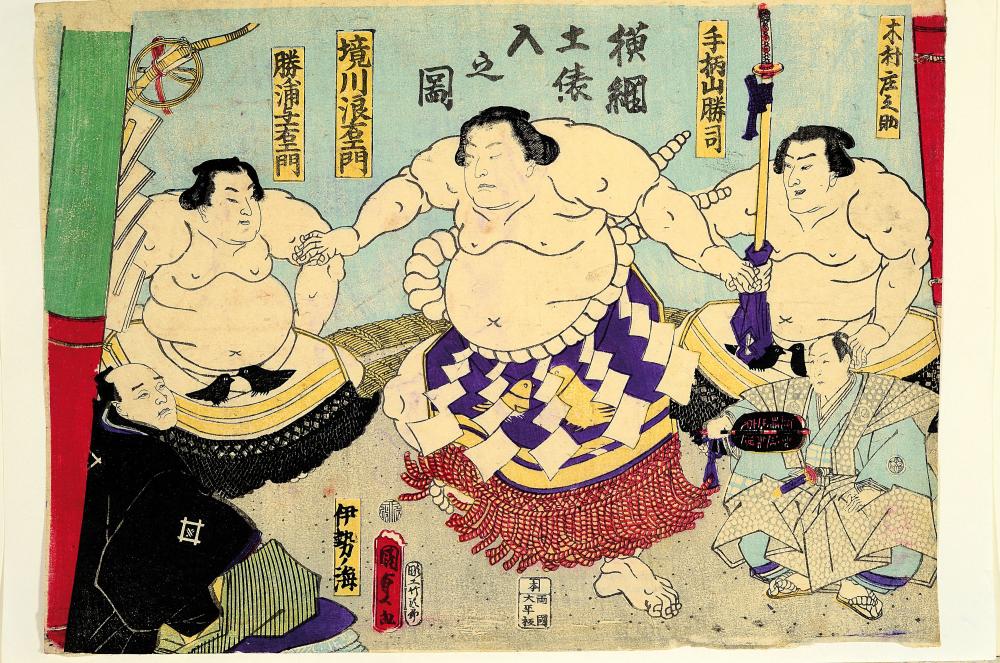
By incorporating these mindfulness practices into their daily routines, sumo wrestlers cultivate mental clarity, emotional stability, and a strong mind-body connection, all of which are essential for their success in the sport.

